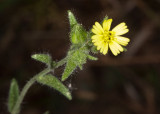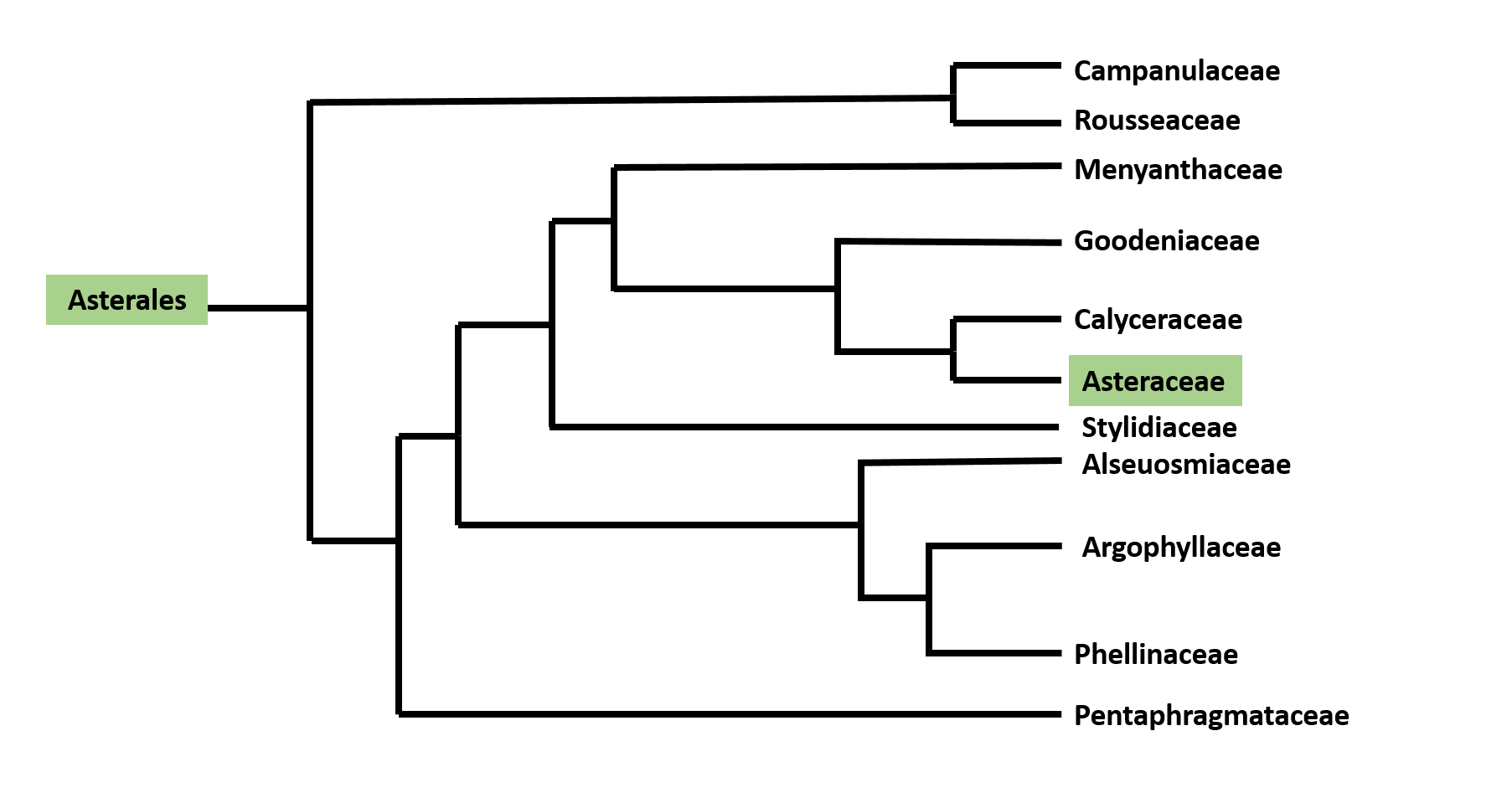Classification
In order to better understand the breakdown
of the lineages in Madia
gracilis we have the Domain, Kingdom, Phylum, Class, Order,
Family, Genus, and Species information listed and described
below. 
Domain: Eukarya
Organisms that are classified as Eukaryotes are
composed of Eukaryotic cells and are made up of membrane bound
organelles (Mozely 2004). Species under the domain Eukarya are also
either unicellular or multicellular organisms (Mozely 2004).
Kingdom: Plantae
Organisms of the Kingdom Planteae are
multicellular organisms that produce their own nutrients through
photosynthesis. This process makes organisms in this kingdom
autotrophic (Dickison et al 2014).
Phylum: Magnoliophyta
Organisms within the phylum Magnoliophyta are
also known as Angiosperms, this group of flowering plants contains
the greatest number of species of all the plant phyla(Takhajan 2009). Characteristics of
Magnoliophyta include a pollen grain that deposites on the stigma
for pollination, contain simplified male and female gametophytes,
and they undergo triple fusion of the egg (Takhajan 2009).
Class: Magnoliopsida
The class Magnoliopsida is a type of flowering
plant that is also known as dicots. Characteristics that make these
plants dicots are cotyledon leaves that are present inside the
plants seeds, after germination these leaves become the first leaves
of the plant (Cooper 2010).
Order: Asterales
This order of flowering plant species is also
known as the daisy order and can be divided into 11 families
(Hodgkiss
2013). Species of this order share characteristics and mechanisms
such as plunger pollination, ellagic acid, and inulin (Hodgkiss 2013).
Family: Asteraceae-Aster
Asteraceae is the largest family of flowing
plants on the planet (Encyclopedia Britannica 2014). A common
characteristic is found in the Asteraceae family is a flowering head
that is made up of florets or small flowers (Encyclopedia
Britannica, 2014).
Genus:
Madia
The genus Madia is comprised of 10 species that
are commonly know as tarweeds. The reason behind the name tarweed
will be described later in on the website. Madia species are
described as being daisy like plants because of their yellow ray
florets (Carr 2000).
Species:
gracilis
As you continue to browse this site you will learn more about this species.
-Go Home, or continue onto
Habitat to learn more about this
species.
